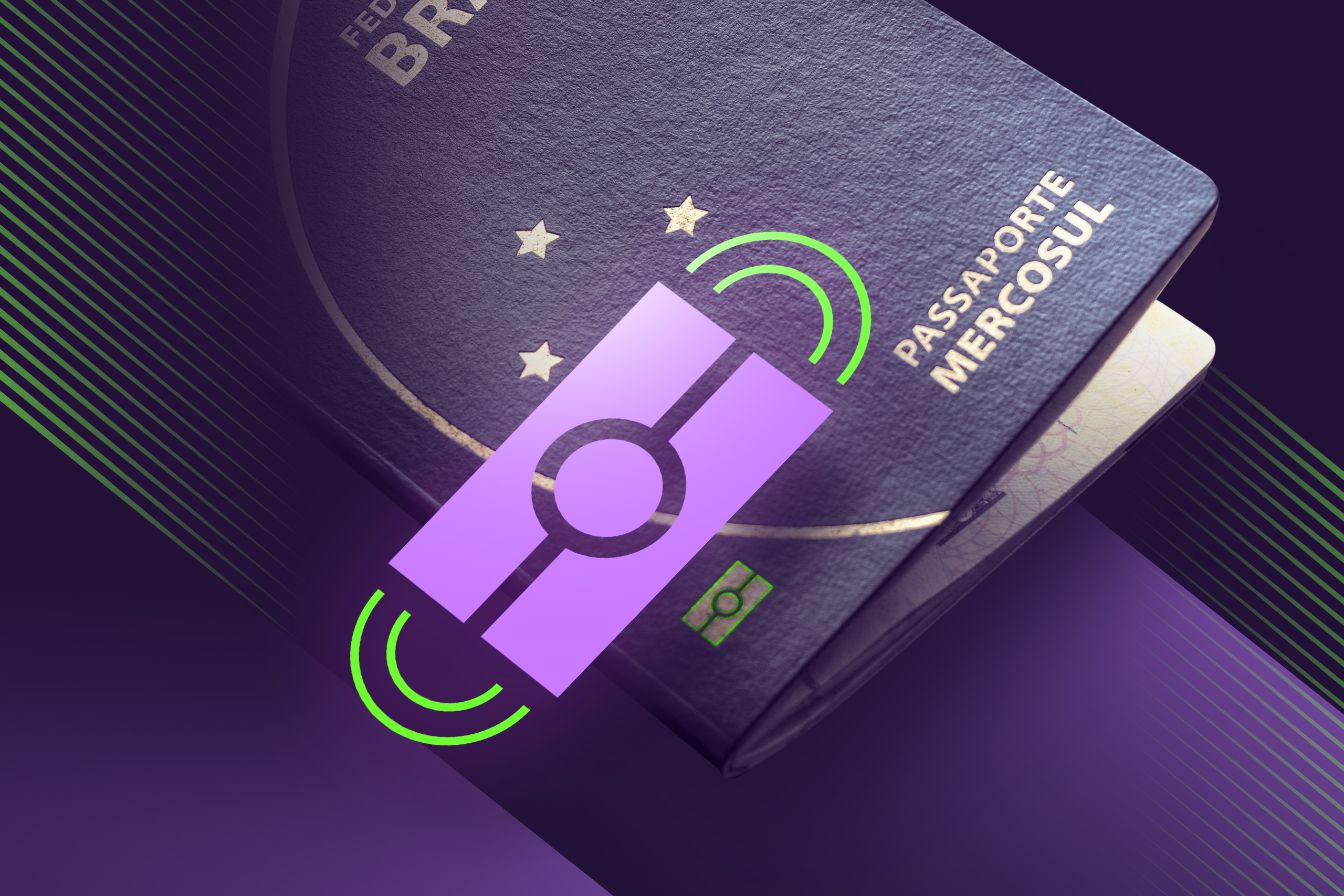Primarily famous for delicious food, intense TV shows, ancient temples, and unique festivities, Mexico also has a fascinating story behind its ID documents.
Let’s delve into the details.
Subscribe to receive a bi-weekly blog digest from Regula
The challenges of processing Mexican IDs
In the Regula database, there are now over 390 document templates associated with Mexico.
The necessity of having a raft of specimens to verify Mexican ID cards, passports, driver’s licenses, etc., can be explained by their numerous peculiarities. In this blog post, we’ll focus on the most significant ones.
Voter cards with additional powers
Every country has their version of the most widely circulated ID, which most citizens use to identify themselves during official procedures, such as online banking or getting a new job. In Mexico, such a document is the Voting Credentials (Credencial para Votar in Spanish), or Voter ID card.
Initially issued by the National Electoral Institute (INE) for Mexican people over 18 years old to participate in elections, a Mexican Voter ID is now official proof of identity accepted by many domestic organizations and companies, both government and private.

There are numerous versions of Mexican Voter ID cards. For example, here are the types of documents from 2014 (left) and 2019 (right).
The fact that a Mexican Voter ID includes a complete set of personal information required for identification may be one of the reasons behind the wide acceptance the document has gained across the country.
In addition to an 18-character voter code number (or voter key), the card displays the holder’s date of birth, photo, name, address, and gender. This data is accompanied by the date when the document’s bearer was registered as a voter.
The voter code number, consisting of digits and letters, is generated based on the individual’s personal data.
The first six digits of the voter key contain particular letters of first and second surnames and a given name. For instance, PTCSLN is a shortcut for Petlachi (1st surname) Cosio (2nd surname) Leonardo (name). As you can see, only the first letters and first internal consonants are used for this purpose.
As a result, there are some specific cases for generating voter codes for individuals having particular names or just one surname. For example, Maria Los Angeles is converted into AN, while Maria Guadalupe appears to be GD.
This is followed by six digits associated with the holder’s date of birth, presented in the YY/MM/DD format, a 2-digit place of birth code, an H or M indicating gender, a random number to avoid duplication, and a check digit.
By the way, it's quite common for the majority of Mexican people to have two surnames. The first surname is typically inherited from the father's side, while the second one originates from the mother's side. Many individuals also have two given names that are also presented in Mexican IDs.
Notably, Mexican Voter IDs contain a personal number—a CURP (Clave Única de Registro de Población) or a unique population registry code. This number, presented on the front side of the document next to the voter key, is also verified during remote identity verification.
The CURP also consists of 18 digits and letters. It is generated in a similar way to a voter key. The first four letters are taken from the bearer’s given name and surname(s), namely, the first letter of the first surname, the first vowel of the first surname, the first letter of the second surname, and the first letter of the name. If it ends up with a real word, such as “VACA” (meaning “cow” in Spanish), the first vowel in this letter code is changed to an “X.” The rule also applies to the letter Ñ, which is also replaced by an “X.”
The next six digits in the CURP code are the date of birth of the document’s bearer in YY/MM/DD format. This data is followed by a gender (H or M) and the place of birth (a 2-letter state code). Then, there are three second consonants from the first surname, the second surname, and the name, respectively. The code ends with a two-digit check digit.
The identity verification software you want to use should understand these complicated algorithms (considering all specific instances) to validate Mexican Voter IDs properly. The solution should also include reading QR codes and barcodes, along with the code from the machine-readable zone on the reverse side, and comparing all this data against the information in the visual inspection zone (VIZ), CURP, and voter key.

The reverse sides of Mexican Voter cards issued since 2014 and those issued later (on the left) and 2019 and later (on the right) look different. For instance, the older versions include the holder’s fingerprint and signature, while the newer ones don’t contain any visual data, only MRZs, barcodes, and QR codes (including fingerprints).
As for security features in the card, they include lines applied with UV inks, a Guilloche pattern, microprinting, rainbow print, and others. Some of them, such as a hologram on the front page, can be successfully authenticated, even during online identity verification.
Finally, since 2013, the holder’s photo in all Mexican Voter cards encodes Invisible Personal Information (IPI), personalized hidden text, such as the individual’s name, the serial number of the document, etc. The IPI-enabled portrait is printed as a single image where the primary photo is visible to the naked eye, while the secondary image, containing additional data, remains hidden. Robust IDV software can verify this hidden portrait to ensure that the photo hasn’t been replaced.
A mix of biometric and non-biometric passports in circulation
Mexican people going abroad use a passport. A machine-readable travel document complying with International Civil Aviation Organisation (ICAO) requirements, the Mexican passport was a non-biometric ID document until 2021. Now, both versions of passports are in circulation.

A Mexican biometric passport (issued since 2021; on the right) complies with ICAO standards. However, non-biometric documents (on the left) are still in circulation as well. One of their peculiarities is the inclusion of text fields in three languages—Spanish, English, and French.
With over 130 million inhabitants, Mexico has the largest Spanish-speaking population. However, you can come across another two languages in Mexican IDs. Some passports, primarily biometric ones, include text fields in Spanish and English only, while others also contain the text portion in French.
According to the ICAO’s Doc 9303, countries whose official language is English, French, or Spanish should use one of the other two languages for the text fields in the VIZ. It appears that Mexican authorities used both.
Mexican passports issued for minors (18 years old or under) contain information about the child’s parents or guardians on page 1. It includes their photos, names, nationalities, personal numbers, and signatures.

There is information about parents or guardians in the Mexican passport issued for minors.
In other aspects, the verification process of a Mexican passport is a standard procedure. However, there is also mandatory RFID chip verification for electronic documents (Pasaporte Electrónico).
National ID cards issued to use abroad
While a Voter Card works as a national ID for millions of people in Mexico, the country’s authorities also issue an identification card known as Matrícula Consular, or Consular ID Card. The document can only be obtained by Mexican citizens living abroad.
Consular ID Cards are issued by Mexican consulates only after the bearer confirms their identity and permanent residence. The document is recognized as a proof of identity by federal, state, and local authorities, banks, and financial institutions in Mexico and other countries.
Matrícula Consular is extremely popular among Mexicans in the US. This form of identification enables them to obtain an Individual Taxpayer Identification Number (ITIN) for filing tax returns and working legally. In several states, the card also allows them to obtain a driver’s license.
What data is in the Mexican ID card?
There are two series of the document: one from 2014 and another from 2022. Since the Consular ID card is valid for five years from the day of issue and may be reissued, both formats are still in circulation. Mexican ID cards of different formats include slightly distinct sets of security features and information about the bearer.


Mexican ID cards are issued only for Mexican citizens living abroad. In some countries, including the US, they are accepted for many identification procedures. The documents from the 2014 series (above) and the 2022 series (below) have some differences.
On the front side, there is a name, date of birth, photo, the bearer’s place of birth and address outside of Mexico, and the issuance and expiry dates. All text fields in the document are in Spanish and English.
On the reverse side of the card issued before 2022, you can find an MRZ code, a barcode with personal data embedded, and a ghost photo. In the newer series, only an MRZ is present, but the bearer's information is more detailed, including height, weight, hair color, and eye color.
To verify a Mexican Matricula Consular ID card, your IDV solution should primarily read and recognize these types of codes, as well as match this information with the data in the VIZ.
No unified driver’s license system
The country's official name, the United Mexican States, indicates the diversity of ID documents there. Driver’s licenses issued in one of the 31 states and the capital, Mexico City, have specific designs and formats that your IDV solution must recognize (by the way, Regula Document Reader SDK can tackle this challenge).
Most driver’s licenses in the country are issued only in Spanish, serving as an example of a domestic ID document.

Every Mexican state issues its own driver’s licenses. As a result, there are at least 32 different designs and formats for documents in the country.
Additionally, each state declares its own requirements for obtaining a driver’s license. As a result, there are many different document types for minors and adults, motorbike and car drivers, etc. But usually, a driver’s license without any restrictions is available to individuals over 18 years old.
A commercial driver’s license (Licencia Federal de Conductor) is a specific case. Implemented by Mexico’s Ministry of Communication and Transportation (SCT) for Mexican carriers working abroad, primarily in the US, this type of license now has three formats: a plastic card (valid for five years after issuance), print card (valid for 30 days after printing and may be reprinted as many times as the driver requires within the license validity term), and a digital document available through the SCT’s mobile app.

Commercial driver’s licenses in Mexico come in three formats, including plastic cards. The majority of documents of this type are valid until March 31, 2025.
Since Mexican authorities are planning to expand their federal digital driver’s license program, most of the plastic cards that are now in circulation will expire on March 31, 2025. However, drivers can continue to use the documents in the one-month temporary printed format. In the future, it is suggested that only a digital format be used for this type of driver's license.
How to effectively process Mexican IDs
Unfortunately, Latin America, including Mexico, remains a region with a high level of document fraud.
The diversity of identity documents increases the risks since inspectors should keep in mind not one but many versions of the same driver’s license. That is why a comprehensive document template database is a must for companies targeting Mexican customers.
The Mexican authorities continue to enhance their identity documents by implementing new security features and formats. The reading and validation of electronic passports also requires an NFC-enabled verification solution. Moreover, it must “speak” Spanish, English, and French, since many Mexican documents include one or more of these languages.
Also, you need to cross-check all the data obtained, both from the VIZ and machine-readable parts of the documents, such as barcodes and QR codes. That enables you to detect a plethora of fraudulent tricks, including photo replacement.
Regula Document Reader SDK covers all tasks—from determining the type of a document to cross-validation of all the data it contains. You can see the product in action or book a call with one of our representatives to go over the details shaping your use case.





